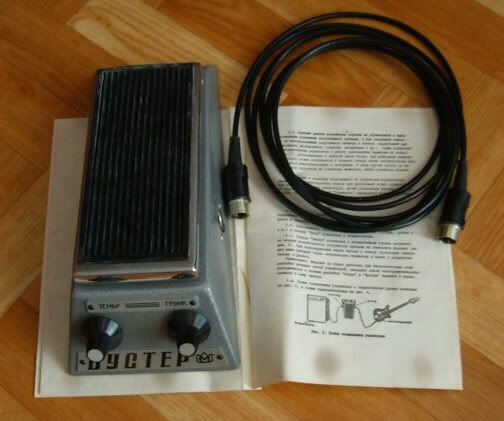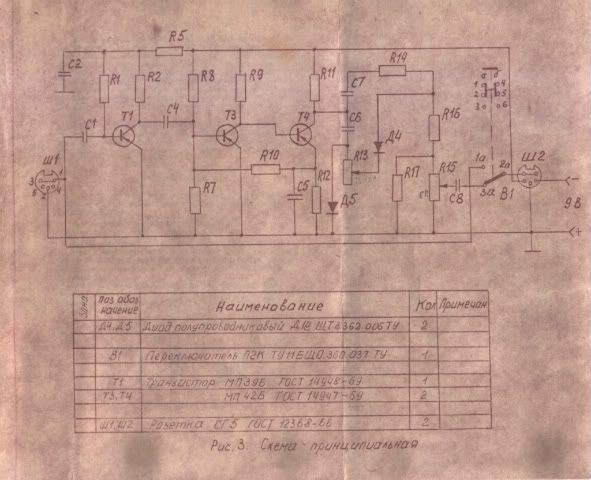
so i've been finding these strange fuzz circuits lately and kind of taking the under my wing. also, i've had an unhealthy obsession with eastern bloc diy and production fuzz pedals. so it's only natural that i take a look at the Booster from Kazan, Russia. it's a Soviet production model from 1977, and although it is called a booster, it is most definitely a fuzz. inside are 3 russian germanium trannys of 2 different types. 2 high gain, and one lower. there are pictures and more information on it HERE at the Cheezy Guitars website.
also from the above site-
"Here's a couple of words from the pedal' owner:
Booster is classic-looking fuzz pedal. It has two controls - tone and volume. Tone works only in two positions - it should be switch in fact, but it wouldn't look so cool;)
Volume output is rather low. Sound is real nice, my friend called it "organic", I would describe it as "rooty" - nice, old fashioned fuzz a'la Velvet Underground. When I bought Booster, it was not working. My friend, £ukasz, who is expert and magican of music gear, fixed it for me. It turned out, that effect has two "build in" errors. First was low volume output - maby it was designed for use rather with radio than guitar amp? Who knows. Second was not-very- professional bypas, which results in high noise level, when effect was switch off. Booster is build on Ge(germanium) transistors and built like a tank - about 1,5 mm steel sheet! Works on 9V battery only. Switch is non-profesional too - it's just an ordinary switch, like you can find in lamp."
Credits:
Piotr Salewski
what first drew me to this circuit was the odd diode configuration after the gain pot. i'll get to breadboarding this thing some time soon and do some more research. also, i have a vero layout in the works. here is the original schematic and parts list from the owner's manual.


i've thought about the volume drop that he speaks of and how it could be remedied. my best guess would be to delete the 150K resistor before the output pot which is probably cutting a lot of the signal. R17 seems a biy strange to me as well- a 300 ohm resistor to ground right before the output pot. this seems to me like it would be shunting a ton of signal to ground uneccesarily. the output pot itself is a 2K2 pot set up in a normal volume configuration. this seems like a quite low value, and also probably contributes to the volume drop, shunting signal to ground. R8 is missing a value on the parts list, so i'll probably have to adjust it to taste when i get it on the breadboard.
the transistors in this pedal are russian germaniums part no.s mp42b, and mp39b.
here are the stats for the mp42b transistor that i found someone selling on ebay.
pnp
200mW
15V
15V
150mA
85>C
1MHz
45/100
CSI
TO9
i have also found on the net that the mp39b has a gain of 20-60, and saw some possible equivalents- MP39A-> 2N273; 2N405/406; 2SB173/170/32.
i've been picking up russian ge transistors on ebay every once in a while, so maybe i'll pick some of these up and try this out with the real transistors. i'll post the vero layout when i'm satisfied it's correct.
cheers!











No comments:
Post a Comment